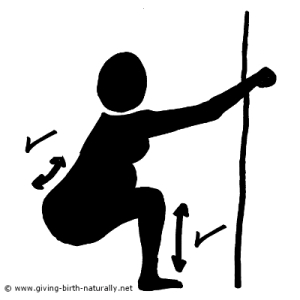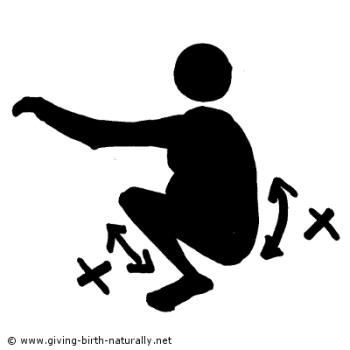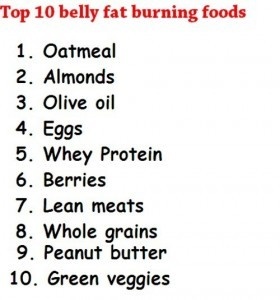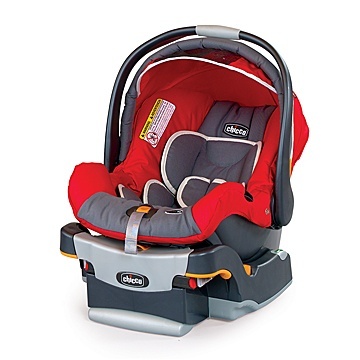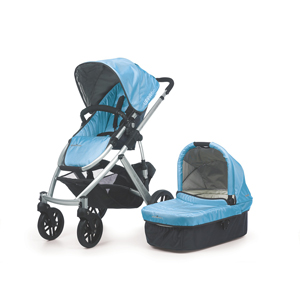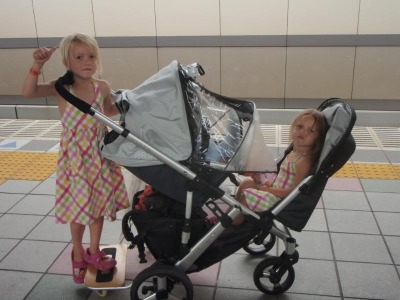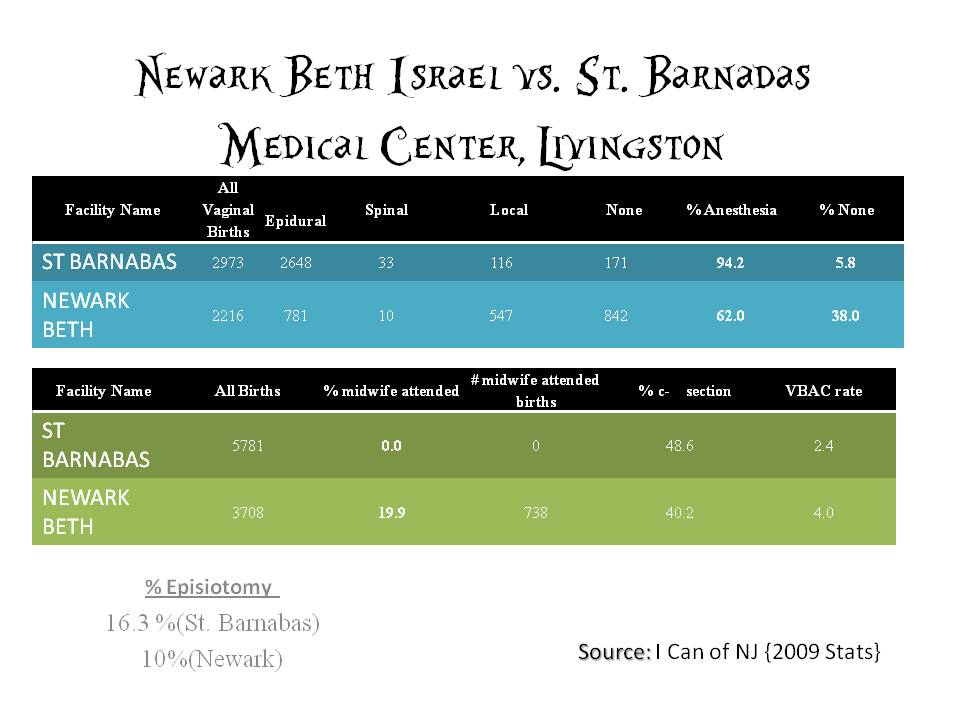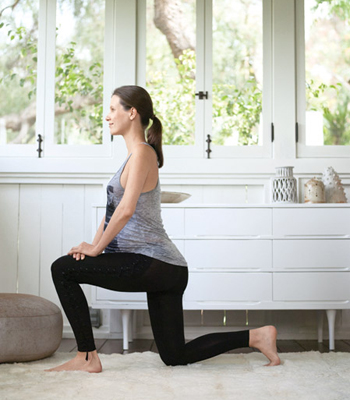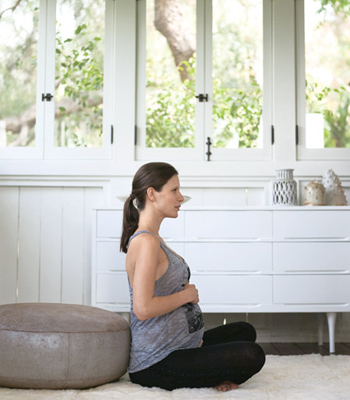Advice from Enjoy Birth's Blog
Some things that are on standard birth plans just don’t happen in a lot of hospitals, and some hospitals are still in the dark ages. I personally would recommend that if you need to have a birth plan stating a LOT of things will be different from policy, the best thing might be to choose a different hospital/birth location if possible. You’ll note as an L&D nurse, I’m planning to birth at home. ‘Nuff said.
So, some questions to ask the nurses on the L&D unit when you tour–
(Please note that many hospital “policies” aren’t policies at all, but just how things are routinely done. Often you can overcome this with simple conversation or, for actual policies, a doctor’s order. For instance, if everyone gets an IV and you don’t want one, your doc/midwife simply needs to write the order stating “no IV access needed until *previously agreed upon situation inserted here*” or for eating and drinking, your provider can write an order for a regular diet.) ~Source
-What is the procedure for admission? Do I go to a triage room to be examined first, or straight to a labor room?
-What is your policy on walking while in labor?
-What about after my water has broken?
-What is your policy on eating and drinking in labor?
-What is your policy on having IV access while in labor? Some facilities will require it, some require for “high risk” moms (you’ll want to ask what the definition is for that) and some leave it up to the provider.
-Is it standard for the anesthesiologist to obtain consent for anesthesia on all moms upon admission? (some places do this and if you’re not expecting it, I could see how this might derail your thinking a little. On the other hand, if you know they’re going to come talk to you about epidurals, general anesthesia, emergency c-section, etc, you can be ready for the conversation, bubble of peace firmly in place 
-What is your visitor policy? Can I have my husband and doula with me for the entire labor? While I push? For delivery? In the OR?
-What is your policy on continuous monitoring during early labor? active labor? pushing? Do you have telemetry monitoring (the kind Lyssa referred to where you can walk around and still be on the monitor) and if so, how many tele monitors do you have (some places have one for each room, some have one for the whole floor, some don’t have it at all). You may also want to ask your provider(s) about how often their patients “require” internal monitoring. In some places it’s reserved for emergencies; however, in many places it’s used for convenience only, and it is explained to the patient as it is being inserted, not prior to doing so. It’s much easier to measure and chart what’s going on with the baby when using internals, so be aware of that.
-What is your policy on photography and video during labor? during delivery? in the OR? after delivery? (every place is different, and it doesn’t matter if your doc says it’s ok, if the nurse doesn’t agree or any other personnel in the room don’t agree, so you want to know what the rules are before going in)
-What is your policy on baby care immediately after birth? Is the baby taken to a warmer? Is the baby taken to a nursery for the bath or is that done in the room? Do they even have a nursery? Is mom allowed time to nurse the baby before the footprints, weight, shots and drops are done? After you ask these questions, remember that YOU are the one who gives permission for these policies to be carried out, YOU can refuse any treatments for baby at any time, and that if the baby is healthy YOU can have the baby discharged as a patient so that the policies are not even an issue.
- What is your policy on supplementing breastfed babies with formula? When do you consider it “necessary”? Do you ever give breastfed babies a bottle of water? Do you give pacifiers to breastfed babies? (Every facility will be different on this as well. The safest thing to do is tape a sign to the crib like the one you get in class specifying that your baby is breast only, and you do not consent to any pacifiers, bottles, or formula. Taping it to the crib in addition to talking to your baby’s nurse is important because many people will come in contact with and care for the baby in the nursery (nursery techs, pediatricians, the person doing the hearing test, other babies’ nurses, lab techs) and you will not have the chance to talk to them or even know that they are caring for your baby. If the hospital requires formula supplementation for low blood sugar, you can specify that you want to breastfeed if that happens.)
Some other things to remember about common practice in hospitals:
- Asking patients about their pain level is a JCAHO (the organization that accredits hospitals) requirement. Most facilities now have a checking system in place and nurses are often reprimanded if they haven’t charted that they asked about pain every so often. (this varies from every hour to every 8 hrs). I get around this by charting that the pt requests I not ask and states they will let me know when they want something. You may want to have a conversation w/ your nurse stating you don’t want to be asked about pain and you’ll be sure to let her know if you need anything from her.
- How you push is not a hospital policy issue. It’s something to be discussed with your provider (midwife or doc) AND with the labor nurse assigned to you when you start pushing. A lot of nurses count to ten and have you “purple push” and a lot don’t. At some teaching hospitals you may have a physician with you the entire time you push. At most hospitals, your nurse is with you the entire time and the phys literally steps in to catch, sews up any tears or episiotomy, and leaves. Midwives in the hospital can fall anywhere in between that with some being very attentive and some being very busy w/ multiple patients or just more inclined toward the medical model and the fact that you have a nurse with you. Find out what your provider does, explain what you want to do, and do the same when you meet your nurse.
- Perineal Massage is something again to be discussed w/ provider ahead of time, and with the nurse who is with you when pushing, since she is likely to be the one doing it while you push if you want. There won’t be a hospital policy on this, and it’s also something your husband or doula can do, and if you’ve read up on it and he’s been doing it the whole time anyway, that might make the most sense, but will get you some strange looks from the staff 
- Treatment of the baby at delivery is another one to discuss w/ ANY provider you might have, especially if you have a physician practice and you don’t want the baby manipulated (pulled on, etc). Treatment of baby immediately after the birth is something discuss with the provider, but is ultimately up to the nurse. Find out what the usual sequence of events is from your provider (do they deliver, clamp and cut the cord and hand baby to a nursery nurse at the warmer? Do they deliver, lay baby on your chest, leave the cord alone and let you bond? Do they hand the baby to the delivery nurse at the bedside and let her decide what to do?) With some docs/facilities, just getting the baby on your chest for a few seconds after delivery before being whisked off to the warmer is an uphill battle. In other places we would never dream of taking the baby away from mom in the first hours after birth for any reason short of a medical emergency. So, find out the procedure from your doc ahead of time, THEN, talk to your nurse when you get there about what you actually want done. If you need to, you can gently remind her that even if this is not routine for her, you are not consenting to having the baby taken from you. Let her know what is important to you, and then, at delivery, you may want to remind doc “remember we talked about not pulling on the baby and leaving the cord intact until it stops pulsing” Old habits die hard and if his/her habit is to clamp and cut before they even hand the baby to anyone, it might be done without thinking! Another thing that is often done without thinking is that whoever has the baby (delivery nurse or nursery nurse) is generally rubbing and scrubbing the baby with towels/blankets to stimulate the baby to cry. If you don’t want this done, you need to talk with your nurse about it before hand and remind at delivery. Most nurses aren’t familiar or comfortable with waiting for a baby to pink up without this stimulation while still be oxygenated by the placenta/cord. You may go through all that discussion just to have the nurse declare that the baby was blue and needed help, and do the rubbing and scrubbing anyway. Letting the baby be and not drying him/her vigorously is just not done in most hospitals.
- Cord traction on the placenta is completely up to the provider you have at delivery. Discuss ahead of time with ANYONE that might be the provider for your delivery and remind them at delivery.
- Circumcision is never done without signed consent, so refusing it in your birth plan really isn’t necessary. Plenty of people don’t circ. It’s something your provider will ask so they know whether or not they need to come back and do it, but I’ve never been in any situation where anyone just assumes a boy will get circ’d, and it fact, most people are happier when you choose not to. Less work for the staff 
- Induction methods and how long you’re “allowed” to labor before requiring induction will be up to your provider (midwife or doc) and not up to hospital policy. That discussion needs to take place in the office and with the agreement/understanding of ANY physician or midwife that might end up on call. If you have a big practice, you can have your doc/mw write out what you agreed to and sign it on an order sheet that you take to the hospital with you during your birthing time. That avoids relying on the on-call person to order something they’re not used to, but doesn’t guarantee they won’t just order something else instead.
You asked about natural methods of induction–there are many methods used, especially by midwives, especially in birth centers or at home, that are not pharmaceutical in nature. The most natural are things like sex (semen softens the cervix, orgasm causes uterine contractions), nipple stimulation (releases oxytocin, causes contractions, can be done w/ hands or a breast pump, or nursing an older sibling), or I would consider AROM to be natural as well, although it is definitely an intervention that has risks (it releases hormones, helps the baby come down on the cervix and generally speeds up labor, but the biggest risk is cord prolapse and other risks include infection). Then you have gentle herbal options like taking Evening Primrose Oil in pregnancy (softens the cervix), using a labor tincture that includes blue and black cohosh with other herbs (usually prescribed by a mw in my area, stimulates contractions), or other remedies like castor oil (not for the faint of heart, induces diarrhea which irritates the surrounding tissues (including uterus) and stimulates contractions). One other option, if I’m not mistaken, I think there might be an HB “baby come out” cd for post dates moms that might be useful. Hospitals tend to be pretty unimaginative in terms of induction, and using pitocin is the standard. There are other drugs that are used to soften the cervix or induce labor, but I think the birth plan is referring to speeding things up once labor is established, and that’s really only going to be done with pitocin or AROM when you’re in the hospital.
The main thing I would find out from your provider is why/when they would want to induce/augment you. Is there a time limit? What if I get to 6 and don’t change my cervix for 2 hours? 6 hours? 12 hours? What if my water is broken? (my midwife has the attitude that as long as mom and baby are well, she’ll wait with me as long as I want to wait, and try to help with things like positioning to solve the problem if there is one. many physicians are taught that 2 hours without cervical dilation is failure to progress, and is an indication for induction or c-section. By the way, you do NOT have to induce immediately if your water is broken before labor starts. If that happens, you should take measure to limit your chance of infection (no cervical exams, nothing in the vagina), verify well being of the baby (ie is baby still kicking?), and know how you want to proceed before speaking with your provider.)
Writing the Birth Plan
When it comes to writing the birth plan out, unfortunately, keep in mind the stereotypical nurse will groan aloud at the nurses station when she reads through your birth plan. This is because often people come in with ridiculous requests (like getting a tub to birth in when there are no tubs on the unit) or worse, a stock birth plan found online with the blanks not filled in.
My suggestion is keep it concise and relevant. No more than a page, bulleted points are great, and use actual conversation with your providers as your primary means of communication, with the birth plan being an easy reference tool for reminders that the nurse can keep or even post at the bedside. The John and Mary birth plan has a lot of excellent points that you should be educated about and is a great starting point for you to decide how you want things to go, but is not necessarily going to be relevant to every birthing location. For instance, the part about leaving the hospital if you’re checked and found to be less than 4 cm is excellent, and something you should be aware of and maybe even discuss with your provider. But, it doesn’t need to be written in a birth plan because you’ll just do it if you’re in that situation. You haven’t been admitted yet, and there’s no reason that you should be, and most places will be happy that you’re smart enough to know you’re not in active labor yet. You may even want to write out your own birth plan just to get your ideas down on paper, and a separate, more concise one for your providers and hospital. (I have one for myself that includes no unnecessary cervical exams–not something I need to write for my midwife, but something I definitely need to tell myself because I get curious and check myself way too often!!)
This was a really helpful article!
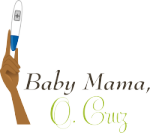
![]() ). Keep in mind, I’m not a doctor so consult with your health care provider before using any of these remedies
). Keep in mind, I’m not a doctor so consult with your health care provider before using any of these remedies![]()






